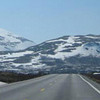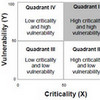 In an article in the Norwegian newspaper Dagbladet today, some of Norways’s major construction businesses, Skanska, Veidekke and Mesta, lament the fact that infrastructure investments in Norway come in small pieces only, and not as large-scale projects, which could have given a bigger bang for the buck, or more kilometers for the kroner, to rephrase it into Norwegian terms.
In an article in the Norwegian newspaper Dagbladet today, some of Norways’s major construction businesses, Skanska, Veidekke and Mesta, lament the fact that infrastructure investments in Norway come in small pieces only, and not as large-scale projects, which could have given a bigger bang for the buck, or more kilometers for the kroner, to rephrase it into Norwegian terms.
Typical Norwegian
It is unfortunate that the decision-making process for infrastructure projects in Norway rests heavily on local and regional governments and less on the oversight of the national planning authorities. Overall socio-economic benefit is set aside to satisfy local desires or is simply overruled by successful local lobbyists, which is why you can find billion-dollar bridges or tunnels going to remote communities of a few hundred souls, while the roads in the big cities are heaving under the deadlock of congestion.
Building a new stretch of road or rail takes a lot of effort, a lot of preparation and a lot of organization. Up-sizing and down-sizing the efforts just for a few kilometers here and there is indeed a waste, and it would be better to have larger and longer-lasting projects.
Most transportation planners will agree on this, but for some reason Norway does not want to hand the decision of whether to build or not or how much to build or not over to the economists and experts, and rather let the politicians decide.
Does the term economies of scale ring any bells here? I say it does.
Links
- Dagbladet: Større vei- prosjekter gir mer vei












